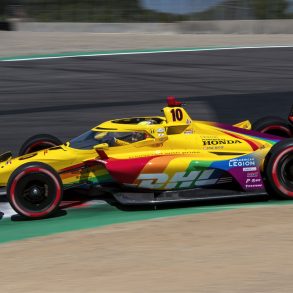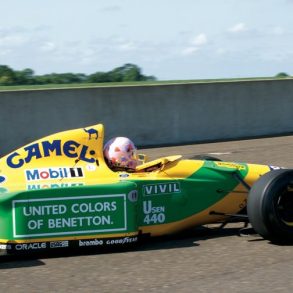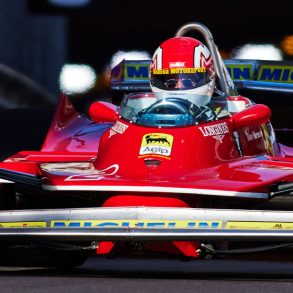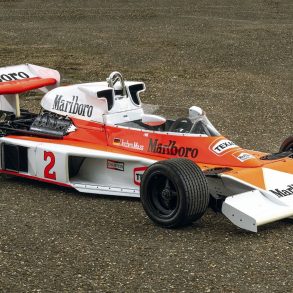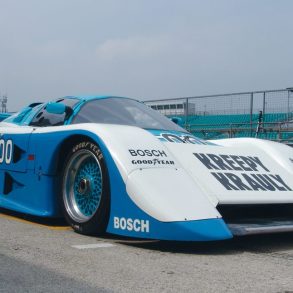Tazio Nuvolari Biography

His riding was noticed by the powerful Bianchi team and he became a member and eventually Italian champion. At the Monza Grand Prix for motorcycles he crashed during practice. 
“In 1935 Nuvolari won the Brno Grand Prix in Czechoslovakia driving on three wheels.” Enzo Ferrari
For the Targa Florio of 1932 he requested of Enzo Ferrari a mechanic who weighed as little or less than he. took the young and inexperienced mechanic that Ferrari had given him and told him that he would warn him when they approached a particularly difficult corner so as not to unduly frighten the young man. As they approached a corner, would shout for the mechanic to take cover under the dashboard. After the race and another victory for , Ferrari asked the mechanic how he had made out. ” started shouting at the first bend and finished at the last one,” the boy answered. “I was down at the bottom of the car all the time.”
In 1933 he scored many victories but became estranged from the team manager Enzo Ferrari and left for Maserati. 1933 also saw him travel to Northern Ireland for the Tourist Trophy Race and a drive in a supercharged MG K3 Magnette. After totally dominating the race someone asked him if he liked the MG’s brakes. replied he couldn’t really tell, he hadn’t used them that much.
His last Mille Miglia, in 1948, was a defining moment in his illustrious career. Driving as if possessed, his car taking a terrible beating, speeding along, the bonnet somehow became unfastened, and a gust of wind blew it over ‘s head and down the mountainside. “That’s better,” shouted Tazio to his terrified mechanic, “The engine will cool more easily.” Crossing the Futa ands Raticosa passes his seat had started to come adrift. could feel himself sliding which brought along a feeling of sea-sickness. Tossing the seat out he used a bag of lemons and oranges as a cushion. With his car literally falling apart under his super human effort the team advised him to quit the race at Bologna fore it was folly to continue under such circumstances and if anyone, had nothing to prove. answered with a derisive gesture, putting his foot down hard and shot away along the Via Emilia. At Modena Enzo Ferrari tried to beg has old friend to retire with dignity and could only weep as he realized that the remains of the car could not possibly hold out. Disaster disaster finally struck on the next leg and all three leading cars were out of the race including who damaged his rear suspension at Leghorn when his brakes failed.
“Whenever I think of him today, I feel myself smiling. He was so full of life, almost bursting. We were astounded by him as a driver and loved him as a man.” René Dreyfus
In 1935 he was induced to return to Alfa Romeo and scored one of his greatest victories at the Nurburgring. Driving an obsolete Alfa against the might of the German nation. He drove at the ragged edge and sometimes over it. His relentless pursuit caused the lead Mercedes to retire with a blown tire and he cruised to victory in front of a large gathering of Nazi party officials. In 1936 he had a serious accident during practice for the Tripoli GP but escaped from the hospital and took a taxi to the race where he finished seventh in a spare car. After the death of Bernd Rosemeyer in 1938, Auto Union was desperate for a driver who could master their mid-engine racecar. At the insistence of Dr. Ferdinand Porsche they turned to an Italian, who would go on to win the British Grand Prix at Donington.
Only World War II could stop but after the fighting stopped he returned to racing at the age of 53. In 1946 he raced at the Grand Prix of Marseilles doing the fastest lap before his engine let him down. In another minor race he had the steering wheel come off his car yet managed to return to the pits holding the wheel in one hand and the steering column with the other.
He continued to win but age and sickness from acute asthma, the result of years of inhaling exhaust fumes would finally take their toll.
Stopping at Villa Ospizio either went or was carried to a nearby church we he asked the local priest if he could rest while his mechanic phoned through that the great had retired and ordered a touring car to take him home. After the retirement, Ferrari wrote later, he tried to console his driver. “I said to him, cheer up Tazio, the race will be yours next year”. He replied: “Ferrari, at our age there aren’t many more days like this; remember it and try to enjoy it to the full, if you can”.
It was said that he wanted to die in the sport that he loved so much but in this wish he was denied. On August 11th, 1953, 9 months after suffering a paralyzing stroke he was dead. As was his wish he was buried in his uniform – the yellow jersey and blue trousers. More than 50,000 people attended his funeral. Enzo Ferrari arriving in Mantua stopped at a plumber’s shop to ask for directions. Seeing the Modena license plates and unaware of the identity of the driver, the workman murmured, “Thank you for coming. A man like that won’t be born again.”
“He talked to his cars, and they answered! It was incredible. He would jump from side to side, put his whole body into the effort. It seemed to me sometimes that he was himself physically lifting the car – over a curb, for example, to take a corner faster. We’d ask ourselves often, how he can drive that way? That’s not right. But then he’d win …”
René Dreyfus
Victories
1924 Tigullio Circuit, 1927 Rome, 1927 Garda Circuit, 1928 Tripoli, 1928 Pozzi Circuit, 1928 Alessandria, 1929 Monza, 1930 Mille Miglia, 1930 Ards TT, 1931 Italy, 1931 Targa Florio, 1931 Coppa Ciano, 1932 France, 1932 Italy, 1932 Monaco, 1932 Coppa Ciano, 1932 Coppa Acerbo, 1932 Targa Florio, 1933 Belgium, 1933 Le Mans, 1933 Mille Miglia, 1933 Eifelrennen, 1933 Coppa Ciano, 1933 Nimes, 1933 Nice, 1933 Tunis, 1933 Ards TT, 1935 Germany, 1935 Pau, 1935 Bergamo, 1935 Biella, 1935 Coppa Ciano, 1935 Nice, 1935 Modena, 1936 Hungary, 1936 Penya Rhin, 1936 Milan, 1936 Coppa Ciano, 1936 Modena, 1936 Vanderbilt Cup, 1937 Milan, 1938 Italy, 1938 Donington, 1939 Yugoslavia, 1946 Albi






















